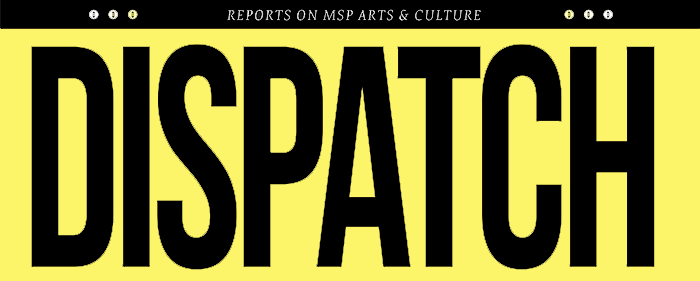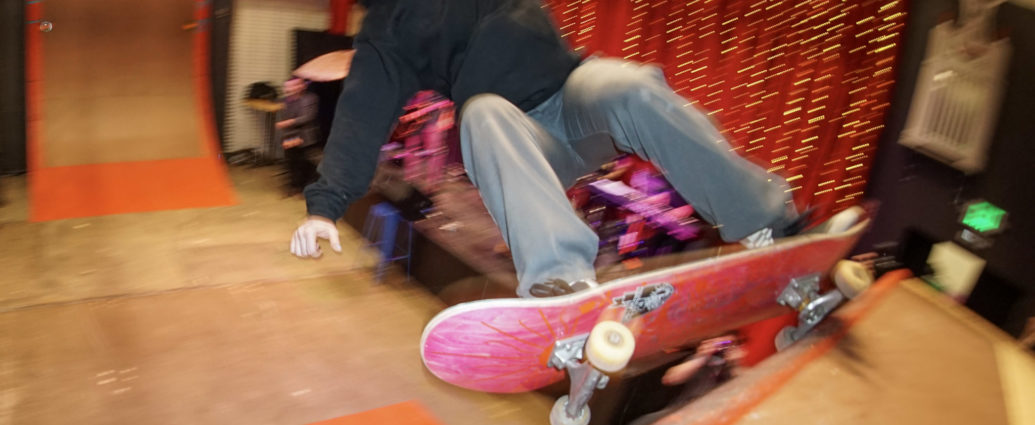Words by Sanaphay Rattanavong
Being the only girl at a skatepark would make one stand out, for sure. But about six years ago, Minneapolis-based Ellen Puls, then in her third year of college, decided to take up skateboarding in earnest at the age of 21. “I always wanted to as a kid,” she says, “but it was always intimidating.”
As a kid, she’d tag along with her older brother when he went to the skate park, but she found the environment utterly intimidating. Flash forward to college and the logical marketing of Golden Valley’s 3rd Lair Skate Park’s Monday Ladies’ Night—which Puls recalls as being either free or just five bucks—she finally found her courage. “It required taking some initiative to seek that out,” she admits. “And for me, starting something new and being real bad at it—it’s facing your own ego, in a way.” Mondays at 3rd Lair were quiet, more approachable, not “a scene of women skateboarding, but just a few [low single digits, ‘a few’] girls there,” Puls explains.
Like a tourist earnestly attempting to speak her host country’s language, she found the natives supportive. “When you go to skateparks and you’re a beginner, people are often friendly and nice to you, which I wasn’t expecting,” she says. “People see that you’re trying, other skateboarders are often happy to give you advice or pointers on whatever you’re working.” Puls found that the skateboarding community, while not necessarily tight-knit, was a large enough community where one could find pockets of affinity and make friends.
While the number of girls and women skateboarding has increased three- or four-fold, from Puls’s point-of-view, the overall ratio is still skewed. But perhaps in a situation where in-the-flesh representation really does matter and in an immediate way, she finds it a significantly changed environment from even just six years ago, saying of the shift, “It’s really exploded, it’s pretty cool.”
Now a graphic designer and co-owner of a small business, Kazoo Branding, Puls can’t help but see the link between creativity and skateboarding: “It seems like most skateboarders are creative people,” she says. “Skateboarding in and of itself is creativity: coming up with lines, approaching obstacles. Street skating is turning the urban environment into a playground.” Also, Puls suspects there are any number of ways skateboarding can be a gateway activity to creativity: “Maybe you aren’t inherently creative, but you start skateboarding and your friend hands you a camera to film a trick, and now you’re a videographer. I feel like creativity is built into skateboarding and that a lot of skaters do work in creative fields.”
For Puls, skating has been a lifeline amidst the stresses of running a small business. “When you’re skateboarding, you really can’t think about anything else,” she explains. “You have to really be present: If you’re dropping in on a six-foot ramp and you’re thinking about your workday, you’re gonna fall flat on your face.”
She tries to maintain her two to three times per week skating regimen. “That allows me to come back to my work and handle it with a refreshed perspective,” she says.
And because silver linings are a homo sapiens sub-specialty, Puls made full use of the open COVID-era concrete when she could, explaining, “I had a lot of fun skating during the pandemic: No one was outside, the parking lots were empty, downtown was empty, you could skate anywhere, it was a lot of fun, honestly—but in a kind of eerie, spooky, way…I got to take advantage of the quiet city.”
Read about this month’s special issue Cities of Skate from the Guest Editor Alex Sveda.


Comments are closed, but trackbacks and pingbacks are open.